Pothos Care Overview
-
Sunlight
Bright indirect
-
Soil
Well-draining
-
Watering
Allow soil to dry
-
Temperature
60-85°F
-
Humidity
Dry tolerant. High preferred
-
Toxic
Toxic to people and pets
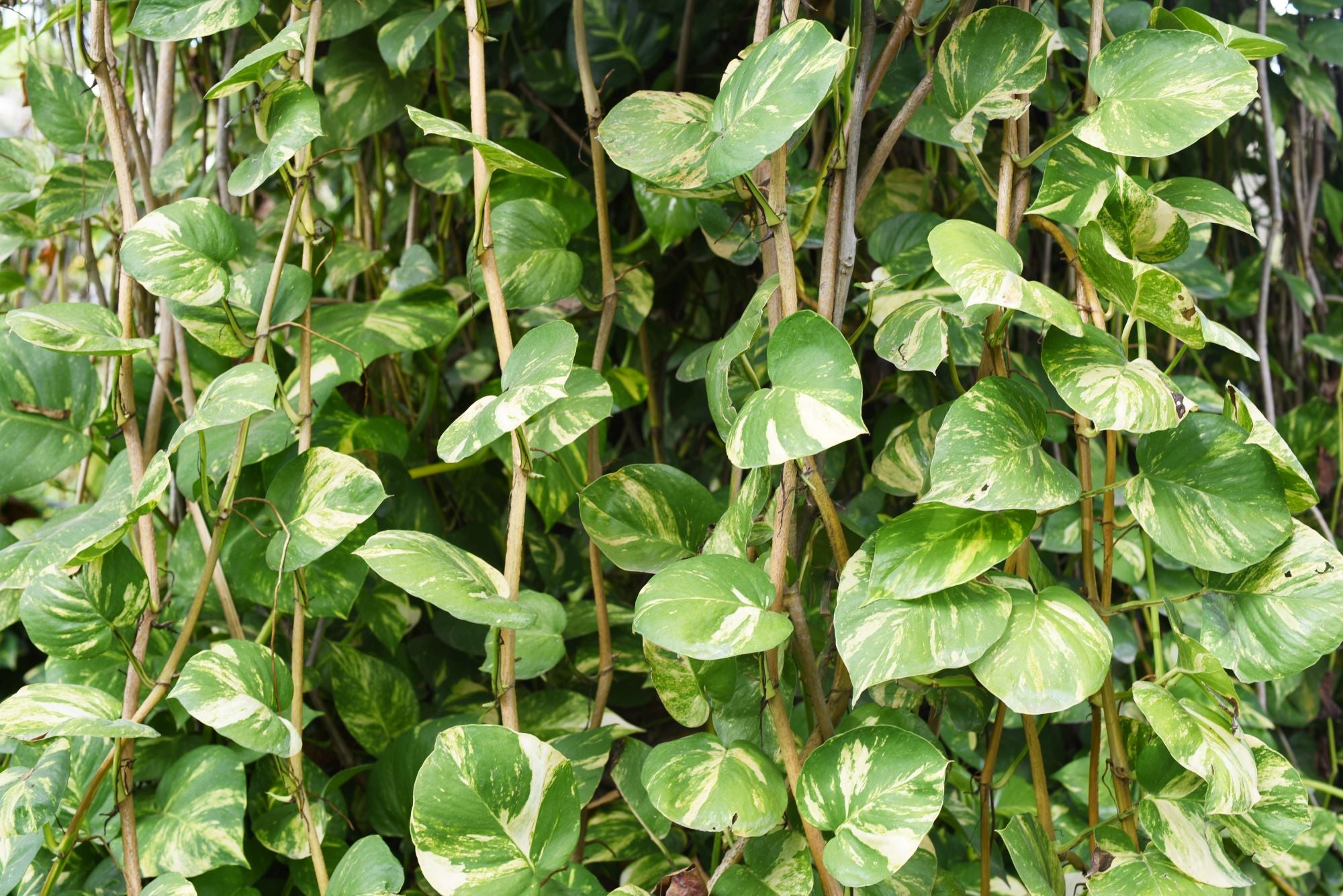
The Devil's Ivy
Pothos is also referred to as "Devil's Ivy" due to its resilience and adaptability. It is capable of thriving in low light and can spread out of control in tropical climates such as Florida, where it is considered an invasive species (7).
They are often grown as trailing or hanging plants, and can grow up to 40 ft long (3)!
Pothos Care Requirements
Pothos plants are easy to care for making them a popular choice as an indoor plant. This guide will show you how to create the best conditions for your pothos plant.
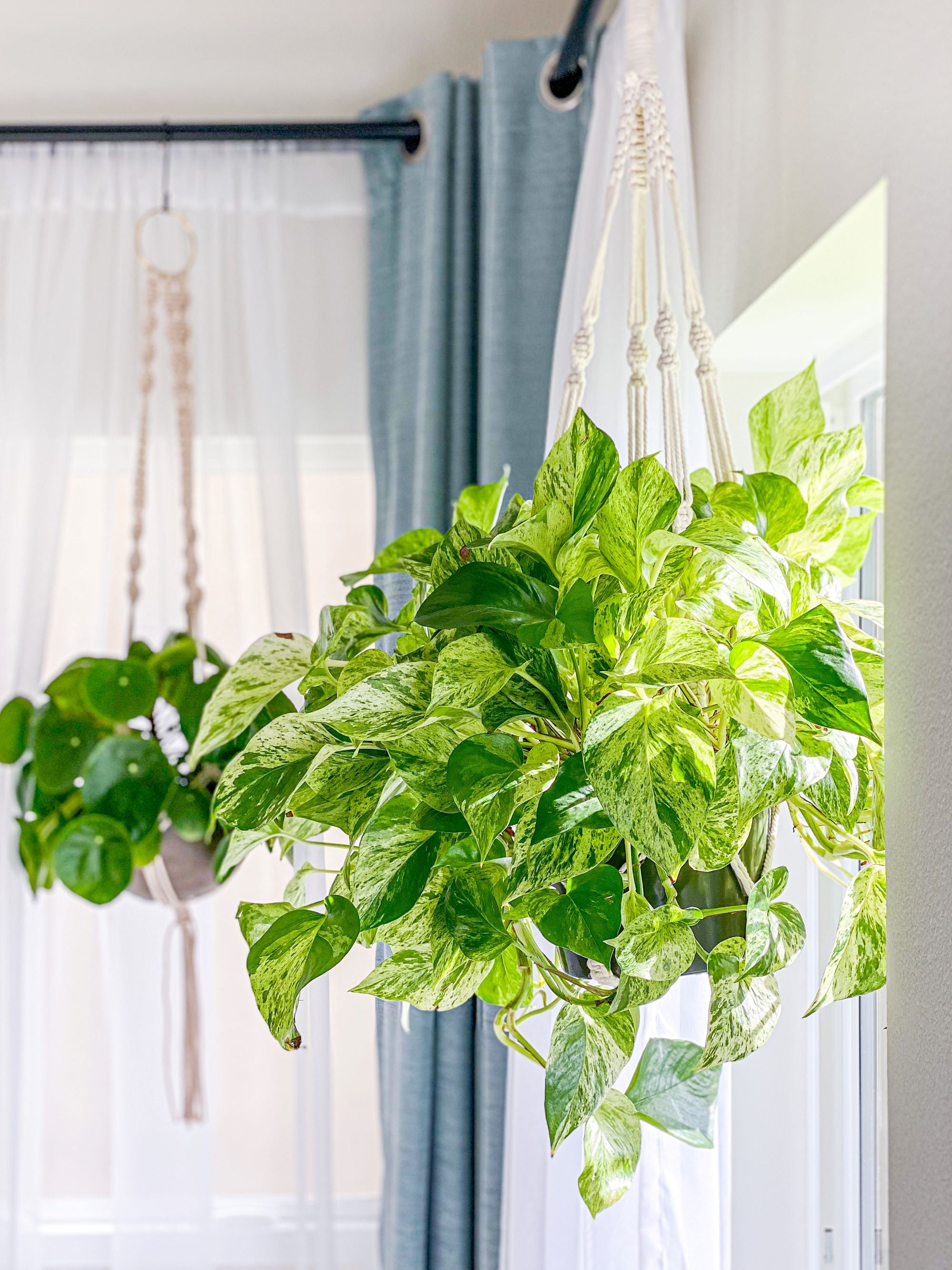
Lighting
Try to place your Pothos in a spot that receives bright, indirect light. Pothos are known for their ability to tolerate low light conditions. Some direct sunlight is also tolerable, but it's best to avoid exposing them to direct sunlight for long periods of time as this can damage the leaves.
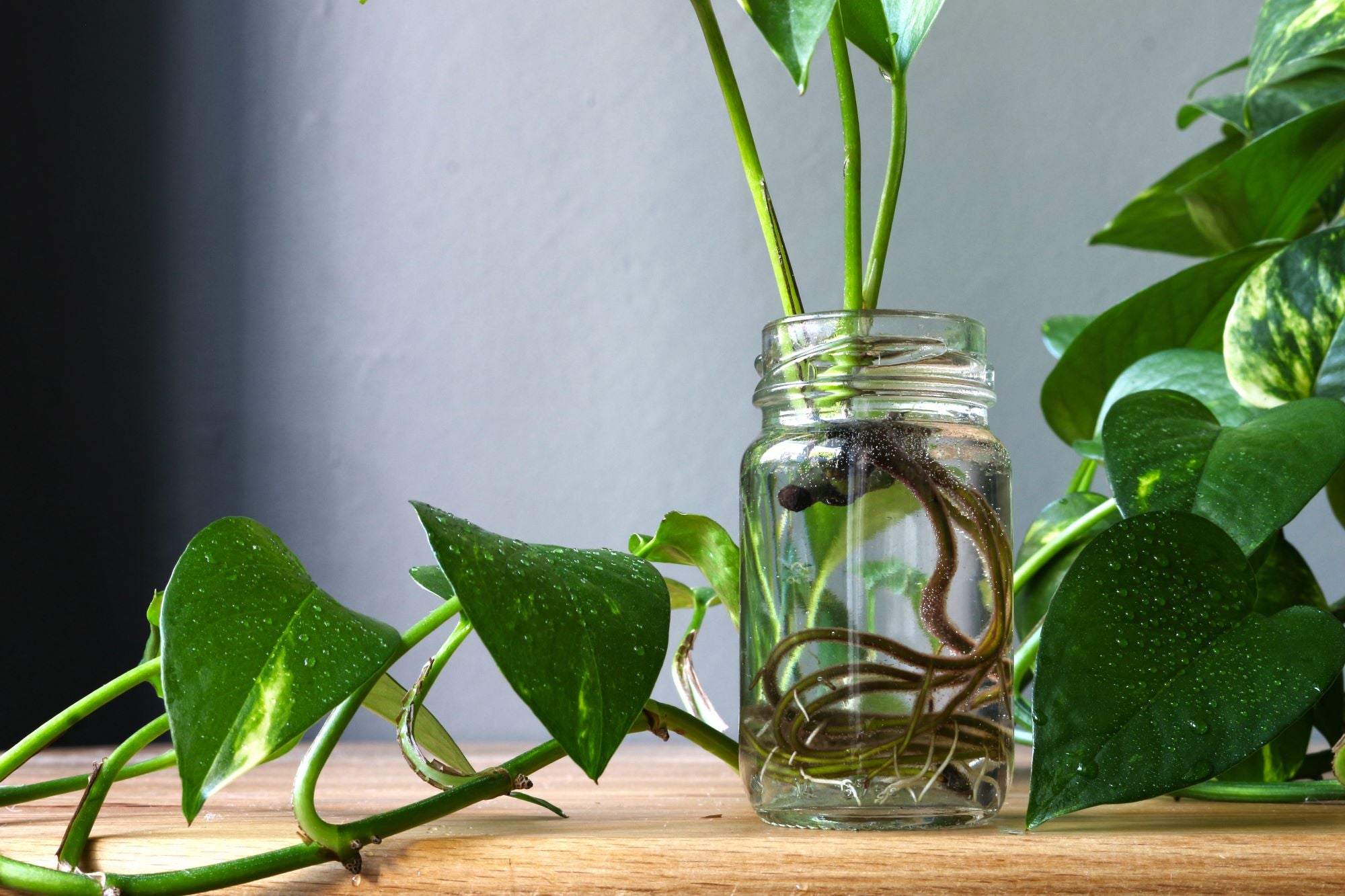
Soil
Pothos need well-draining soil that is watered when the soil feels dry.
Standard potting soil mixes will suffice or a potting mix containing perliteor coco coir to improve drainage and aeration (1).
Pothos plants can be grown in water or soilless substrates. They also prefer to be somewhat pot-bound.

Watering
Allow the soil to dry between waterings. To check the moisture level, stick your finger 1" into the soil. If it's dry, water with room-temperature water until it's moist. Let any excess water drain away. Water more frequently during the growing season and in dry climates. Once you become familiar with your plant, you'll see it visibly droop when it needs water.

Humidity
Pothos would prefer higher humidity levels because they are native to tropical regions (6). However, they can tolerate normal household humidity. If you live in a drier climate, your plants may benefit from additional humidity, which can be achieved with a humidifier.
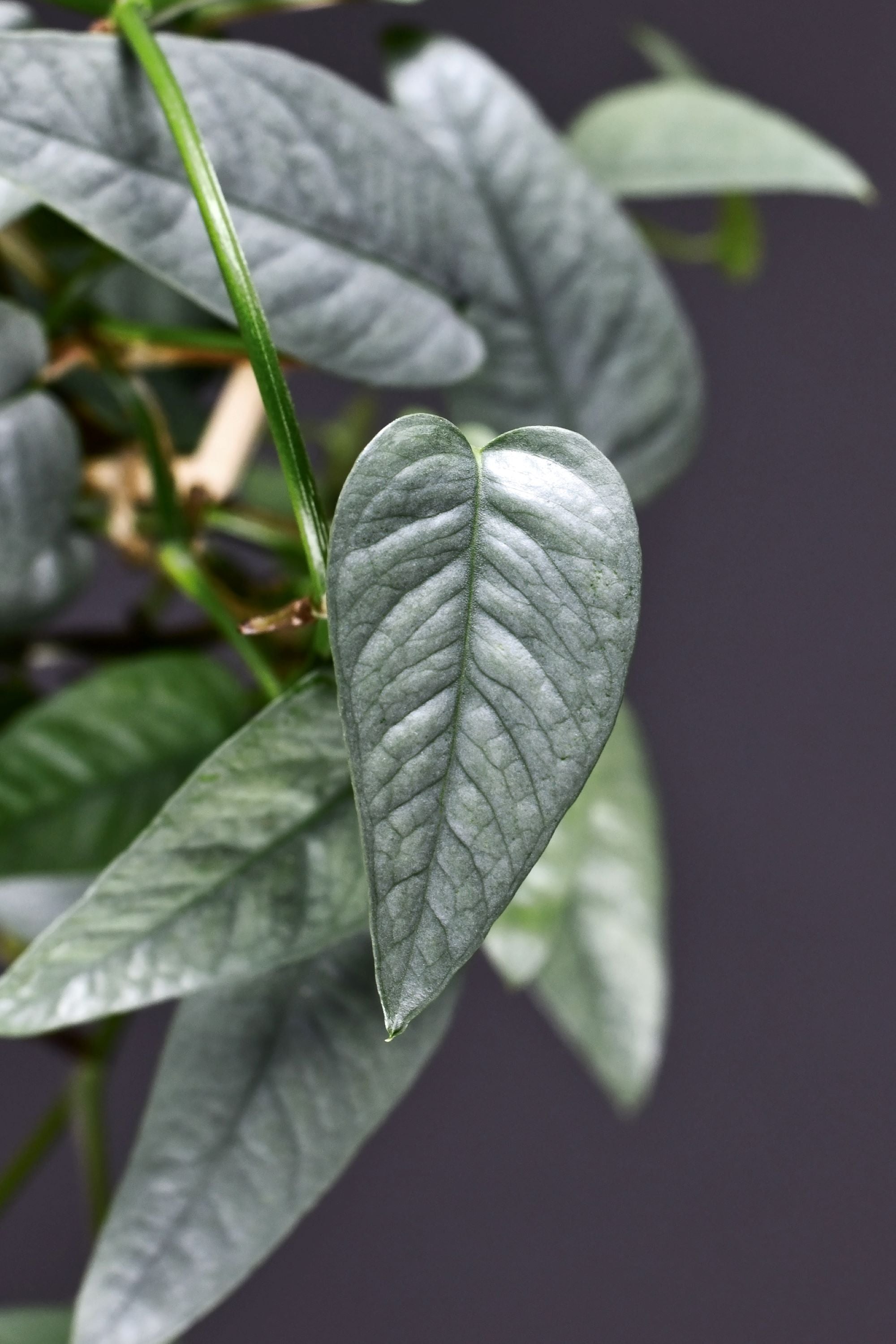
Fertilization
Pothos plants can benefit from a standard fertilizer every other month during active growth (6).
Flush the soil with water every few months to remove excess mineral build-up and salts.
Toxicity
According to the ASPCA, pothos plants are toxic to dogs, cats, horses, and likely humans. Hanging plants can help keep them out of unwelcome reach.
Common Varieties of Pothos
-
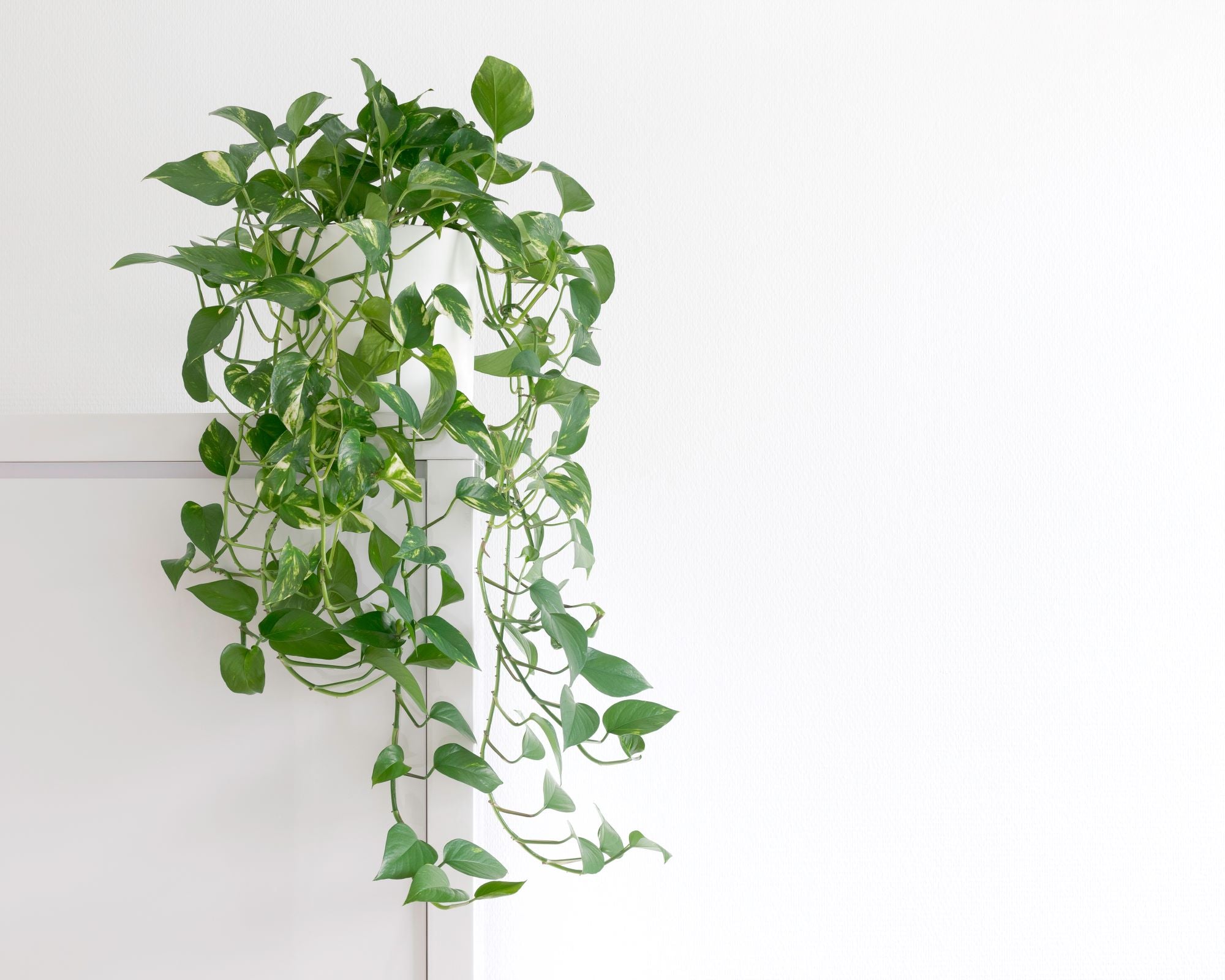
Golden Pothos
The Golden Pothos is the most common variety of Pothos and is known for its large glossy green leaves with yellow variegation.
-
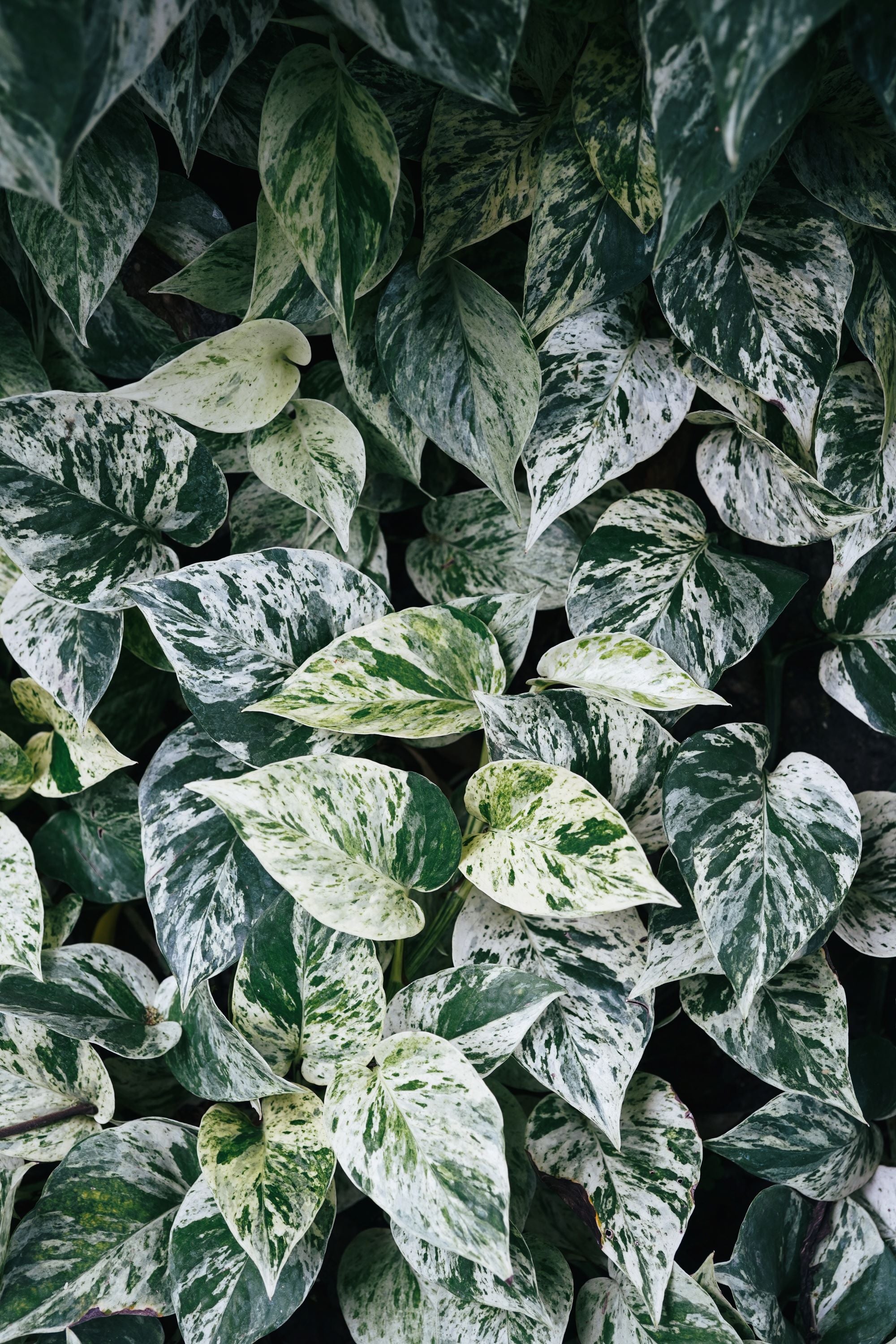
Marble Queen
The Marble Queen Pothos regally displays white variegation giving it a marbled appearance.
-
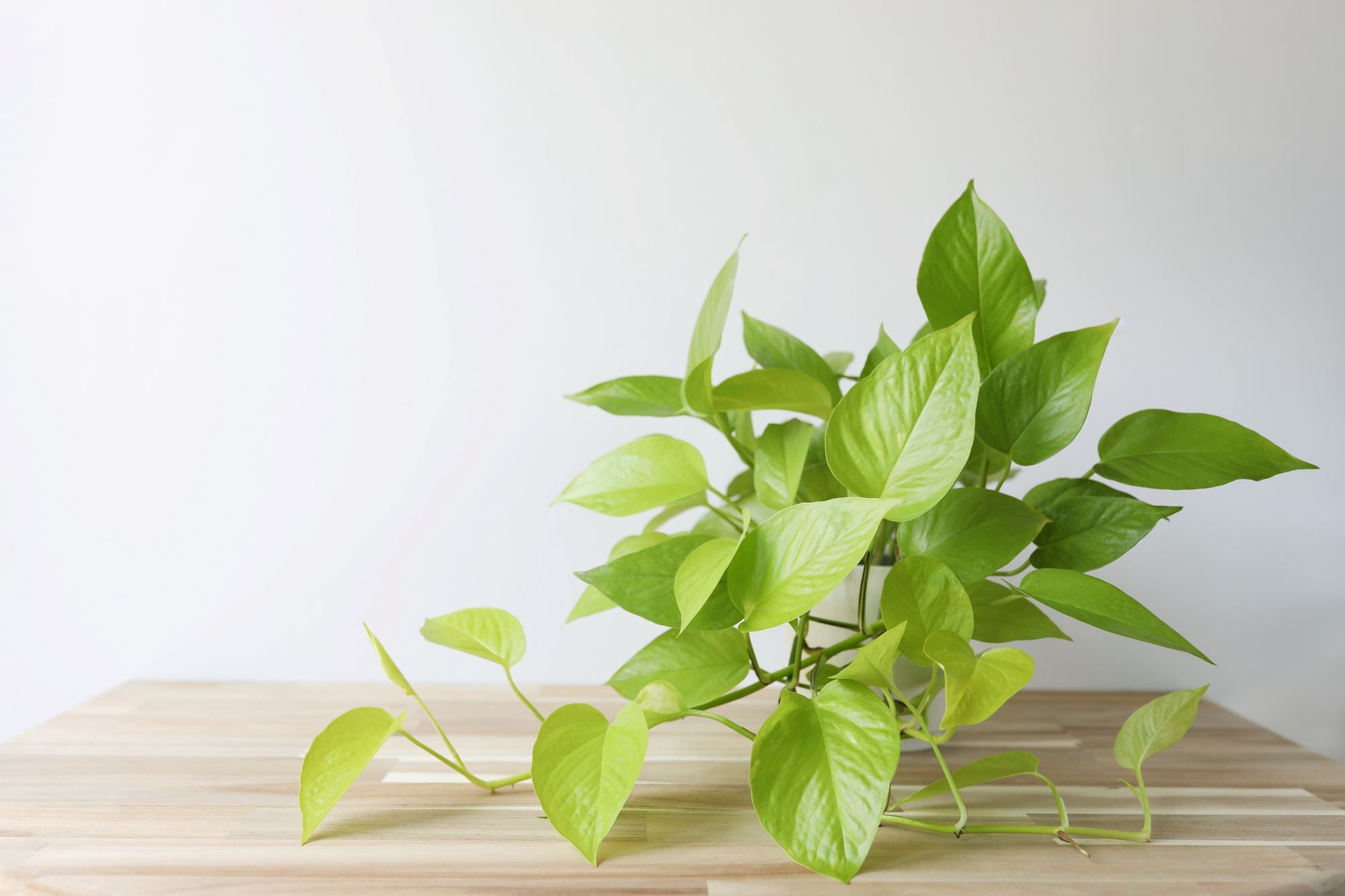
Neon Pothos
The Neon Pothos is a vibrant, non-variegated variety with bright citrus-colored leaves.
-
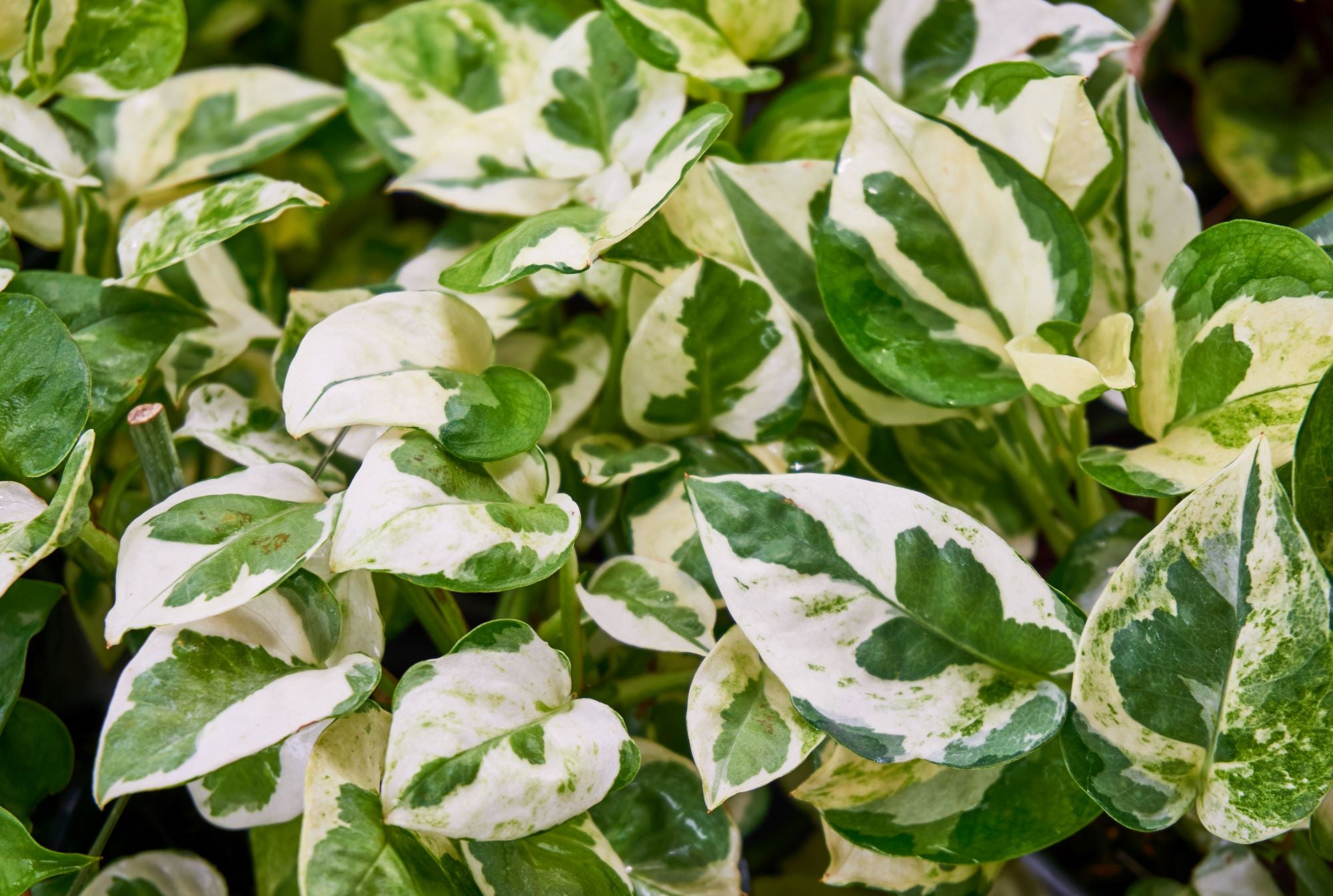
Pearls and Jade Pothos
The Pearl and Jade Pothos is a smaller variety with retro green and white variegations and compact growth habit.
-
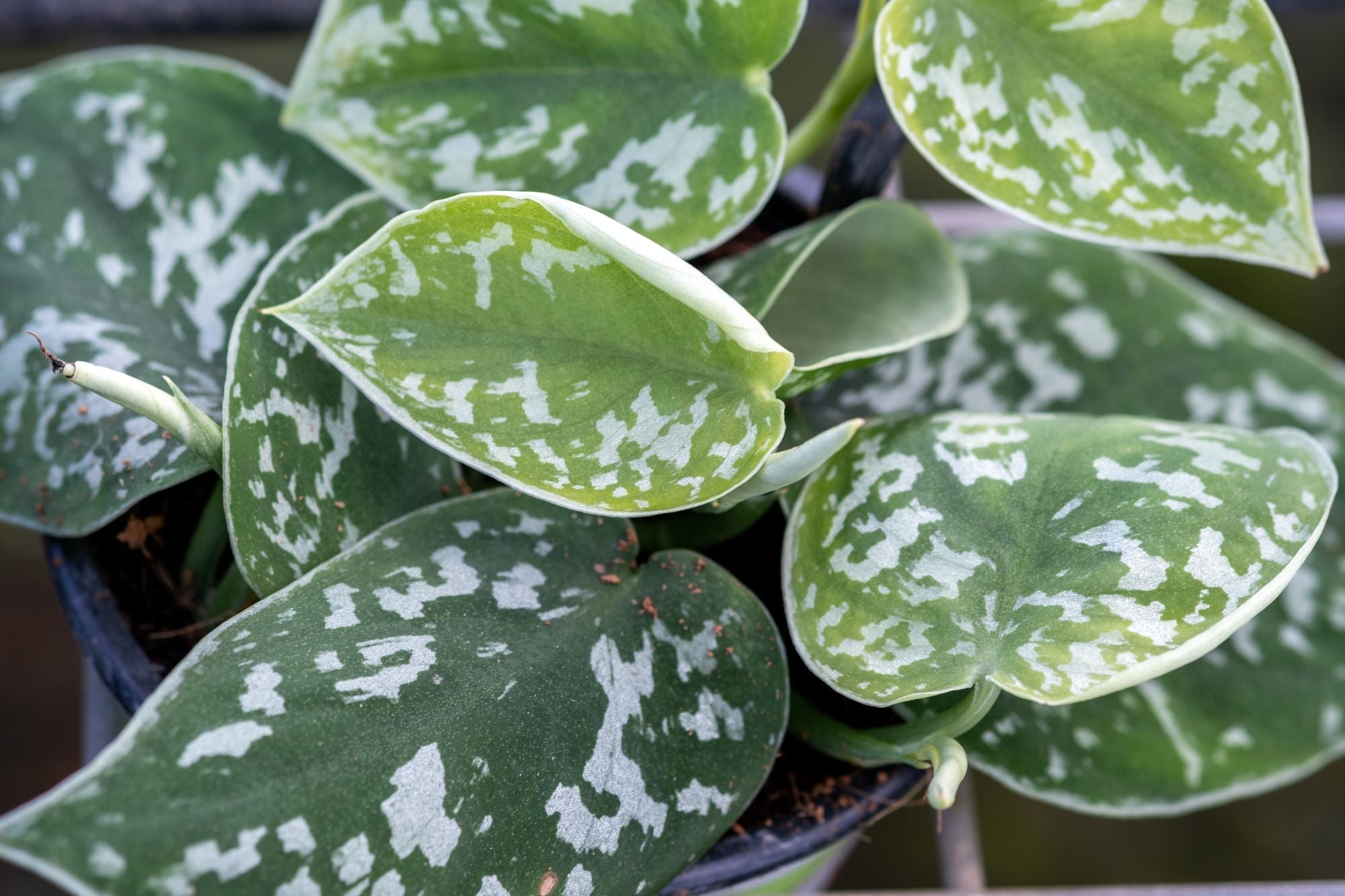
Satin Pothos
The Satin Pothos has dark green leaves with silver shimmery variegation giving it a satiny appearance.
-
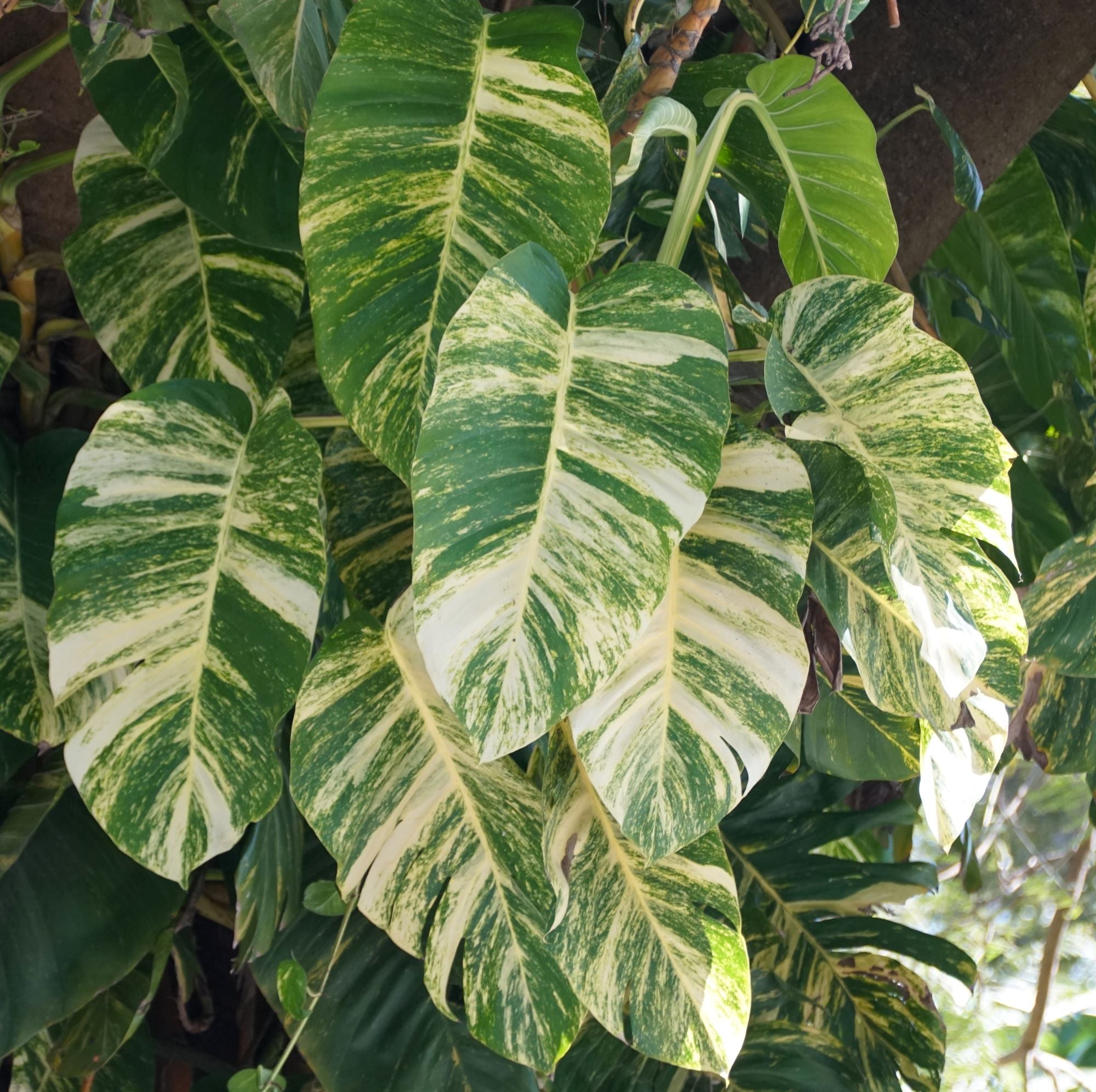
Hawaiian Pothos
The Hawaiian Pothos has green leaves with striking yellow variations and is known for its rapid growth.
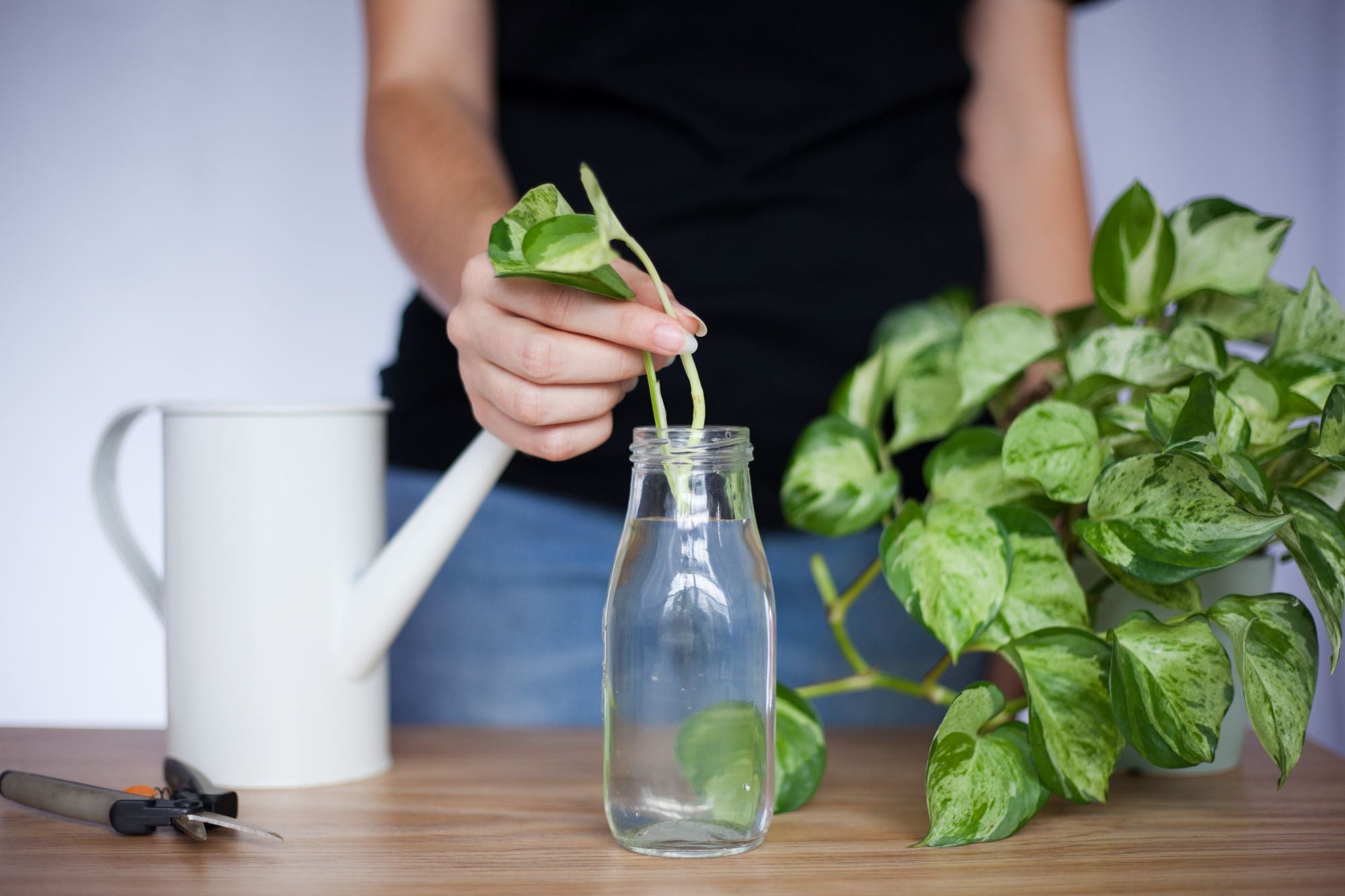
Pothos Propagation
Propagating Pothos plants is easy and can be done in 6 steps:
-
1. Gather Cuttings
Gather stem cuttings from a healthy Pothos plant. The cuttings should be at least 4 inches long and should have at least 2-3 leaves on them.
-
2. Remove Leaves
Remove the leaves from the bottom half of the cutting, leaving only a few leaves on the top.
-
3. Rooting Hormone
Dip the bottom of the cutting in rooting hormone (optional).
-
4. Plant in Soil
Plant the cutting in potting soil, an inch and a half below the soil's surface.
-
5. Keep in indirect light
Keep the cutting in a warm bright spot out of direct sunlight.
-
6. Allow Roots to Grow
The cutting will develop roots in about 2-4+ weeks.
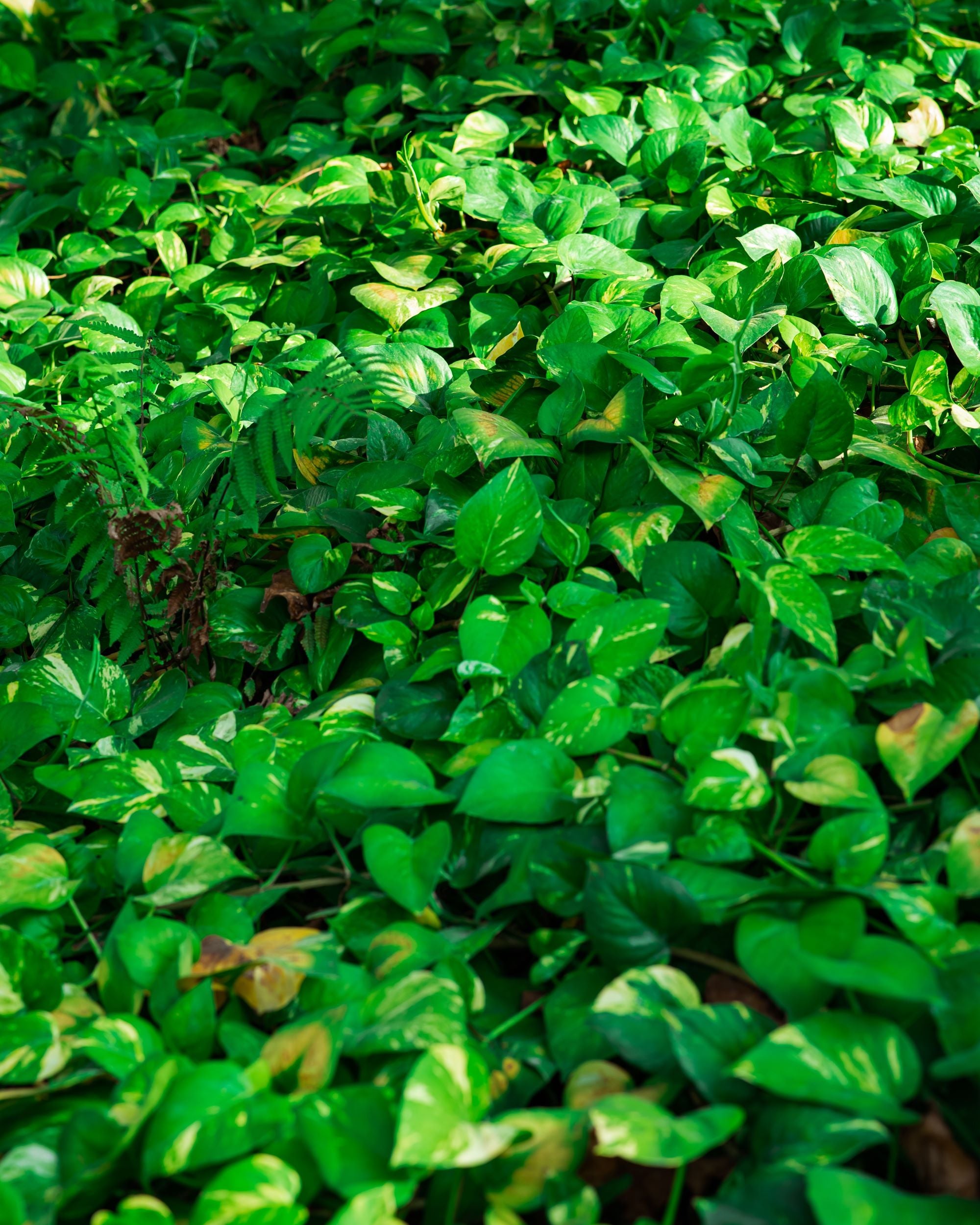
Common Problems with Pothos
Yellowing leaves: This can be caused by a lack of light, overwatering, or a nutrient deficiency.
Wilting leaves: This can be caused by underwatering or a pest infestation.
Brown or black spots on leaves: This can be caused by a fungal or bacterial infection or exposure to too much direct sunlight.
Slow growth: This can be caused by a lack of light, a nutrient deficiency, or a pest infestation.
Pests: Pothos plants are prone to pests such as spider mites, mealybugs, and scale insects.
Root rot: Pothos plants can develop root rot if left in standing water for too long.
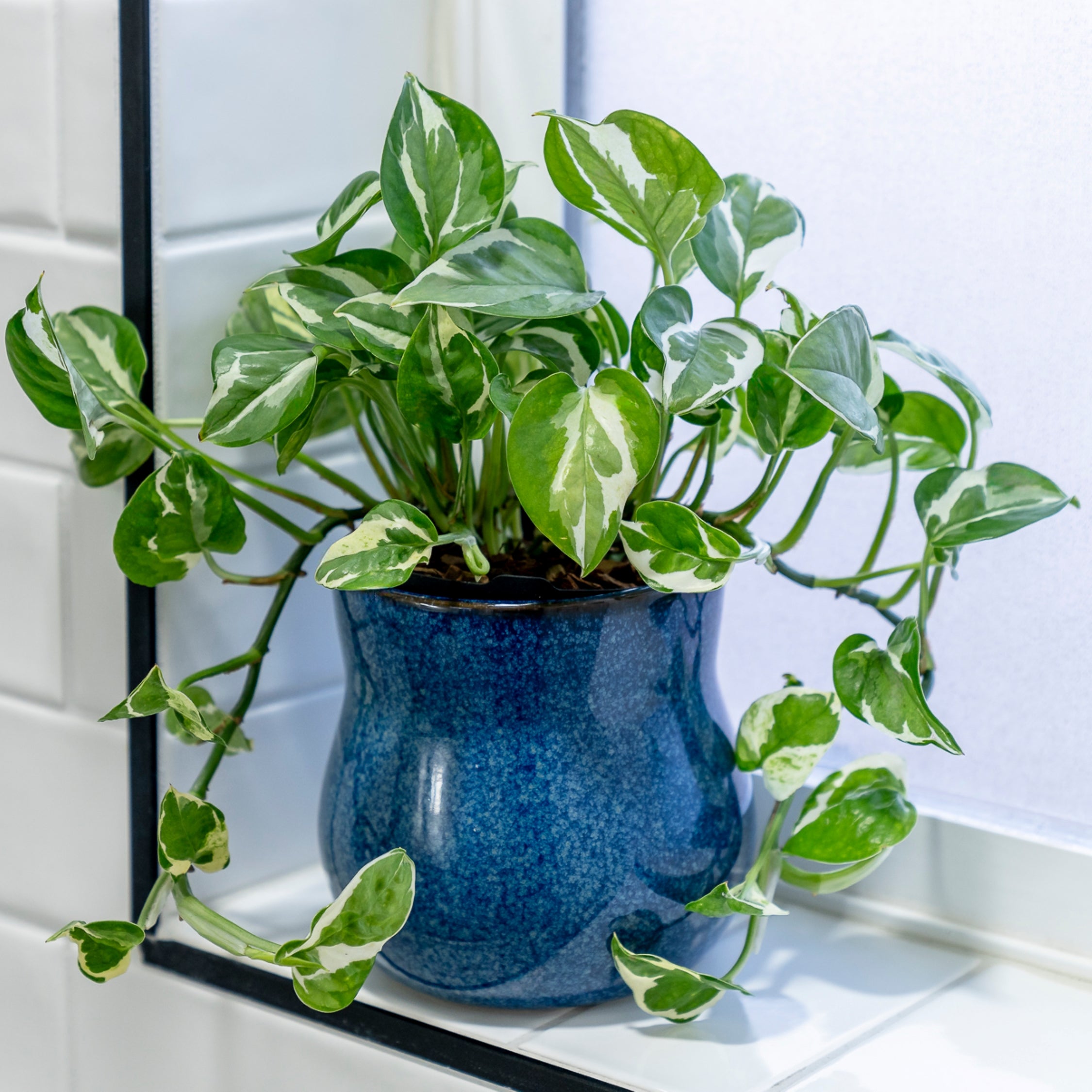
I hope this article helps you flourish! At Happy Roots, we offer double-lined and bottom watering compatible plant pots, which are ideal for snake plants. Wishing you a happy gardening experience!
- Rikki
Works Cited
1. Almana - Pothos
2. ASPCA - Devils Ivy
3. NC State Extension - Epipremnum aureum
4. Missouri Botanical Garden - Epipremnum aureum
5. Royal Horticultural Society - Epipremnum aureum
6. Wisconsin Horticulture - Pothos, Epipremmum aureum
7. University of Florida - Keep it in the pot – control your pothos
Images Cited
-
All images are owned content or licensed.
1. Golden pothos or Scindapsus aureus texture background By ArtBackground
2. Moorea island jungle and mountains landscape By daboost
3. closed up the golden pothos on a tree By pandara
4. plants hanging in macrame hangers By Ranjani
5. Pothos epipremnum aureum cuttings propagation in a jar against background plant leaves By Aybars
6. Beautiful Scindapsus aureus Eagler or Epipremnum aureum wall background.Serenity nature background.Leaf texture background. By witsawat
7. A droplet rolling off a leaf. Rainy day. ByYG PhotoArtWorks
8. Leaf of tropical 'Epipremnum Pinnatum Cebu Blue' houseplant By Firn
-
9. bright living room with houseplant on a cupboard in a white pot By dropStock
10. beautiful pattern of marble queen leaves By aunyaluck
11. bunting lime Golden Pothos green plant on wooden table with white wall By paladin1212
12. Golden pothos leaves By misspin
13. Scindapsus pictus, the satin pothos or silver vine By vadiml
14. The variegated leaves of Giant Hawaiian Pothos climbing on top of a tree By K.A
15. young woman places plant clipping for water propagation By Amanda
16. Creeper plant growing in wild, jungle vines climbing on tree trunk isolated on white background, clipping path included. Devil's ivy or Golden pothos, the money plant. By ellinnur
17. Golden Pothis in Charcoal Classic in Shower by Happy Roots

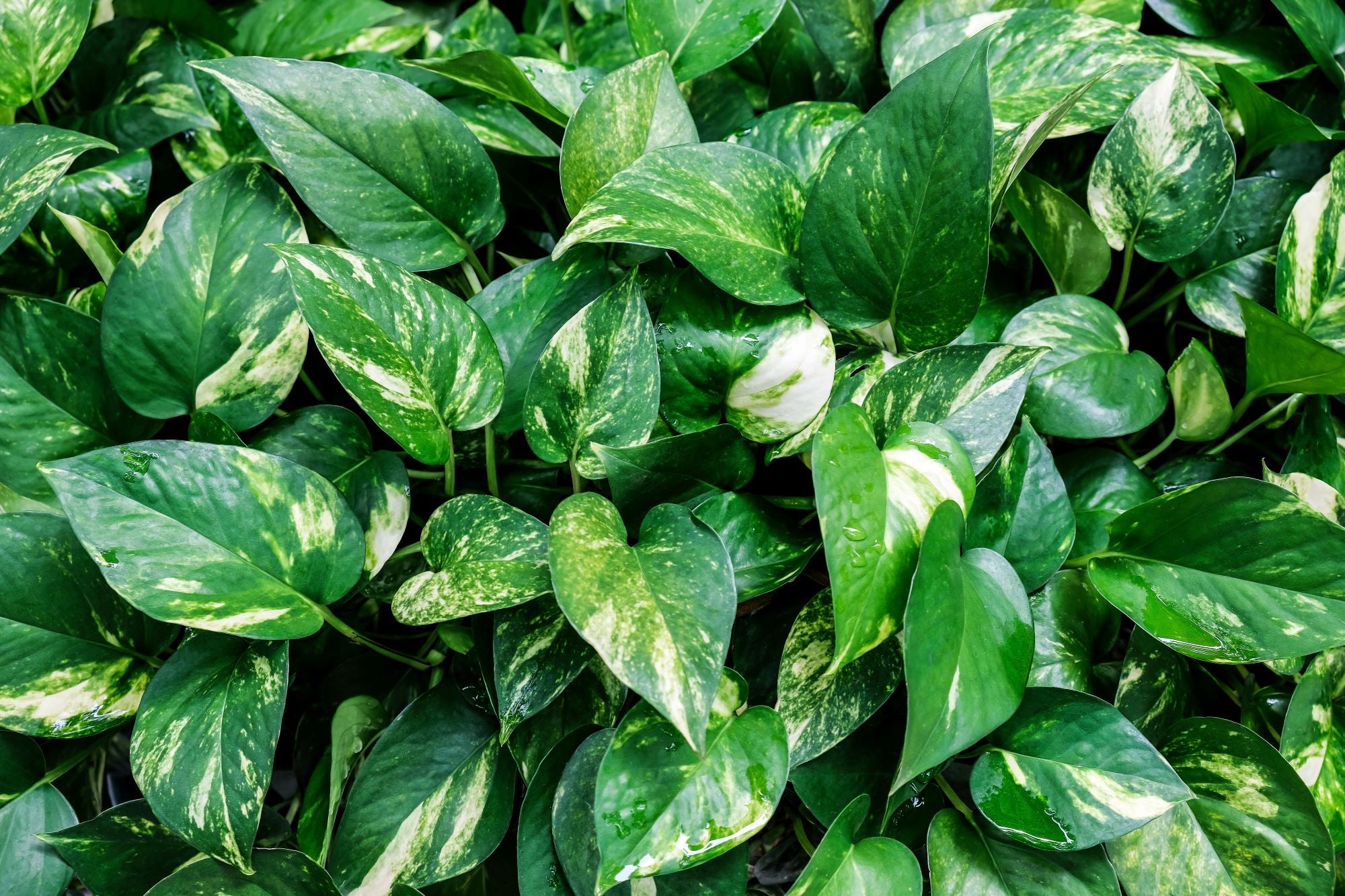







1 comment
THANK YOU FOR YOUR WONDERFUL “FIRST” BLOG. Very informative. Now in your future blogs, would you put in your plant pot designs. I still want one of your larger curved pots in gold, if you have one. Just send me an e-mail and I will pick up at your shop.
Miss seeing you two so am glad for spring and the area’s wonderful outdoor markets.
Good luck on your new blog.